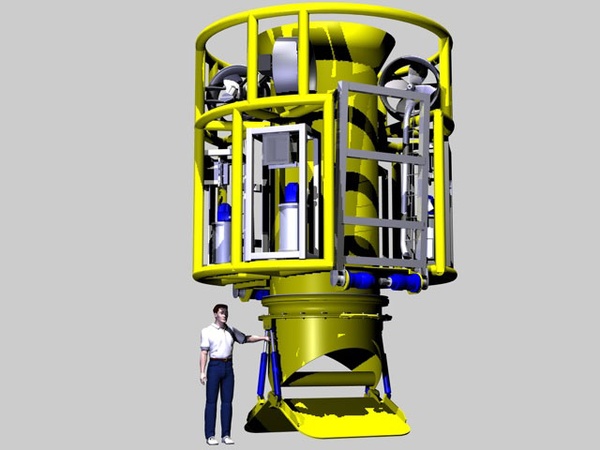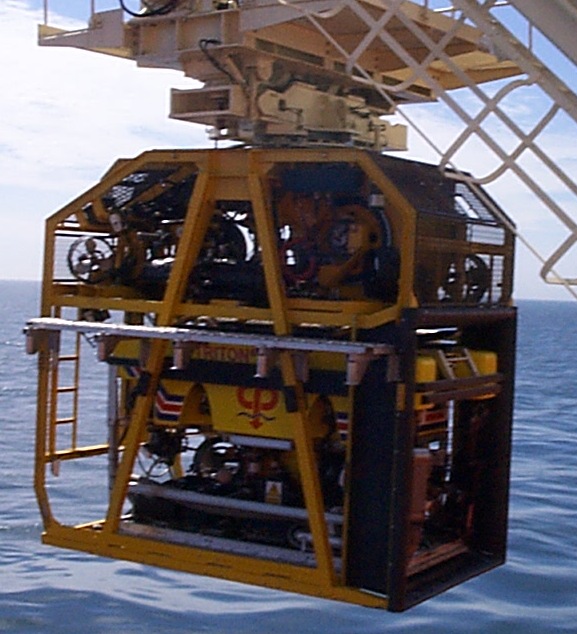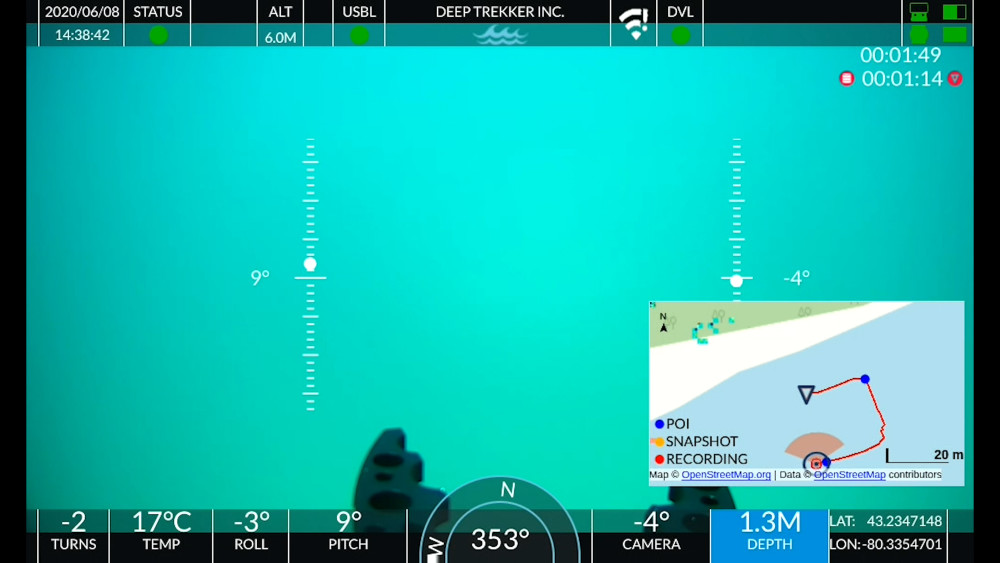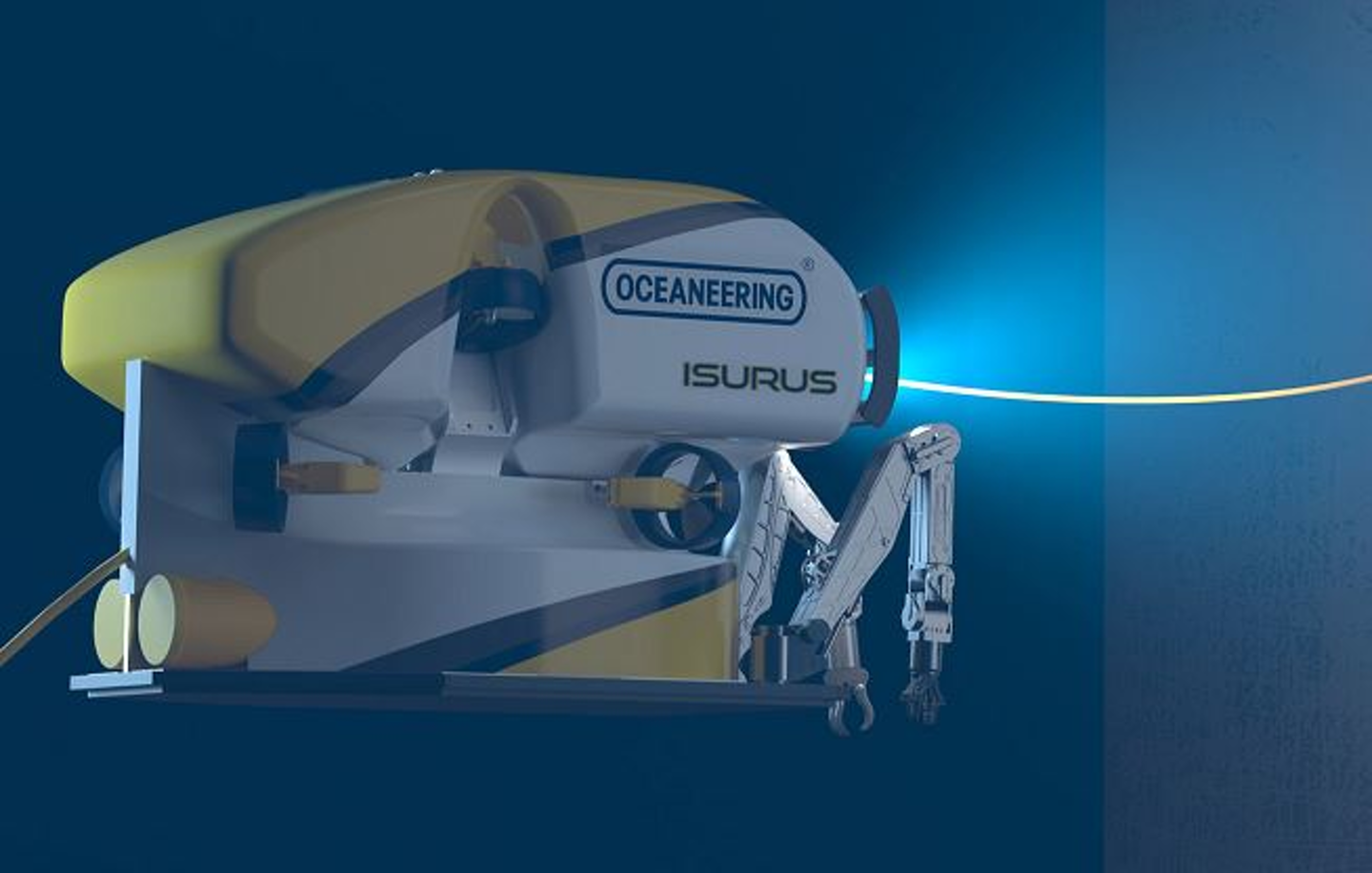Home › Forums › ROV › ROV Technical Discussions › Follow up question re two ROv ops. Flying Garages
- This topic has 11 replies, 9 voices, and was last updated 15 years, 3 months ago by
rovnumpty.
-
AuthorPosts
-
September 21, 2009 at 8:02 am #2957
DANFROV
KeymasterAnyone got any good feed back how these work in real operations?
I am trying to find out if anyone is using any clever software / positioning / station keeping sensors to operate. Powered garages?
At the moment I know most people have a pilot for the ROV and one pilot for the garage. Any good advice / experiences?
Dan
Workocean limited
September 21, 2009 at 8:14 am #24729Savante
ParticipantDan,
Both Schilling and Perry have driven tms – good for getting a bit more extension on the excursion of the vehicle, and I think they can drive too. In practise, this amounts to two thrusters laid side by side and they differentially drive the heading (and can apply translation forces) to the garage. The Schilling system has an autohead function. The problem I see with them is that they are operated at great depth (3000m), using something like HipAP (inaccurate using 1% slant accuracy) or expensive IMU units so would think you’d need to pay attention manually.
Heading control = cheap, but position control = expensive.
Is this w.r.t your second rov problem?
KISS. (Keep it simple…..)
September 21, 2009 at 10:43 am #24730September 21, 2009 at 11:38 am #24731Donald Faulds
ParticipantHello,
Perry Slingsby has supplied several flying garages (eg the TMRVs on the CSO Deep Blue) and has two new ones for XLXs in the UK factory. These are proper systems with four vectored thrusters, full-size HPUs and the reference instruments to go with them. I have spoken to several crew that have operated the Deep Blue systems offshore and they are just like ROVs (but no verticals!)I have not found anyone who has had offshore ops experience of the 2 thruster TMS designs. I am a wee bit sceptical of how well it works without at least third thruster to give the vector control? 😕
Any comments out there would be interesting?
September 21, 2009 at 1:32 pm #24732Rons_ROV_Links
ParticipantWell, I’ve never been flying a TMS, only did 10 years of rockdump ROVs but I think they fly like a TMS.
The ROV in the picture below is the one (and only) ROV made by Engineering Business. It hangs on 3 armoured umbilicals and has 4 thrusters with vector control. It has an autoheading function (switched on all the time) and the pilot is able to fly it fore and aftwards.
Normally the vessel drags it through the water over a pipeline or cable, and the pilot only has to steer it port and startboard.
It’s also possible to have the ROV directly controlled from the survey (semi-autonomous). In this case the system keeps the ROV above the database line, offset 0. September 21, 2009 at 8:42 pm #24733
September 21, 2009 at 8:42 pm #24733Donald Faulds
ParticipantHere is a flying garage. 100hp and 4 vectored thrusters. Flies like an ROV. I would still like to hear of anyone’s experience with 2-thruster TMS systems? I wonder how well they work, it seems to me you need 3 or 4 thrusters to get the vector force? 😕
(sorry about picture quality – best I could find to hand)
deep_blue_garage_269.jpg  September 21, 2009 at 8:50 pm #24734
September 21, 2009 at 8:50 pm #24734Andy Shiers
ParticipantUnless you are working at depth …. I canna see the reason for having a remotely operated TMS 😕
Saab have come out with a load of schpeel about using Controlled TMS’s to stop entanglement when several ROVs are in the water at the same time like say Jacket inspection ( canna see the point in that either ! )
In regards to Seaeye software , They have a TMS with CPU and TDC , The mind boggles why they don’t use their grey matter and put something useful on the TMS software and put depth and compass rose on it 🙄
A proper pilot would then know where the bloody entrance is to the garage and where the Tms is at depth after shift change ( Cause’ alot of "Muppets" don’t bother having a systems log or to type in the dive log when they drop or raise the TMS 😕 )
If you know what depth the TMS is at and you have nav screen , There is NO reason why you should get the Tethers entangled .Divers aside of course 🙂 If you have divers involved YOU WILL get entangled ’cause they are like ants ! 😯 They don’t think about things in the way until they need to go back to the bell ! They walk in ( What they think is a straight line ) Like migrating buffalo 😆 The go ahead not around ! 😀September 21, 2009 at 9:01 pm #24735Rons_ROV_Links
ParticipantI would still like to hear of anyone’s experience with 2-thruster TMS systems?
2 Thrusters would give you only the ability to manouevre the TMS in 1 direction. It can be combined with an autoheading function, that’s all.
September 22, 2009 at 6:16 am #24736HelpMaBoab
ParticipantOceaneering have had thrusters fitted to garages for years, the first one I worked on was on a Magnum 24? (Transocean Leader) 1998. It had auto heading fitted using a poxy KVH compass.
I seem to recall it worked ok, until the novelty wore off and it was never used.September 22, 2009 at 9:25 am #24737Toni Morgan
ParticipantI worked with a garage with 2 thrusters when I was with Oceaneering. I have to say when doing bubble watching with the rov caged you can hold station quite well and it’s good for turning the cage when flying the rov back in. Usless if the current is more the a half a knot though.
September 25, 2009 at 4:04 pm #24738Ioseba
ParticipantOur SeeTrack Offshore (www.seebyte.com) can be used to keep the ROV stationary relative to the seafloor (the system pilots the ROV so that it automatically compensates for the heave and currents). It can also be used to move the ROV in Cartesian coordinates with simple mouse point-and-click commands. In a set of experiments in the GOM we found that this made docking to a garage simpler even in substantial heave as the pilots needed to just concentrate on one moving part (the garage). If the garages were also fitted with thrusters and a SeeTrack Offshore unit the process should be very easy as both systems would be stationary as the unit would compensate for the heave and currents.
Note that for our system to work the ROV needs to be within Doppler range of the sea floor (depending on the Doppler this can be up to 300 ft or so).
September 25, 2009 at 7:47 pm #24739rovnumpty
ParticipantUsed one of the Oceaneering two thruster cages.
As Helpmaboab said, the novelty wore off very quickly.
Until the Magnum crapped itself. Still managed to carry out the daily bullseye checks without any hydraulics on the vehicle.
That was in 2000m of water mind you, with no current.
Only place I could see TMS thrusters being an advantage would be on survey jobs – maybe take a little bit of the drag off the vehicle when running a line.
And I suppose it would define which way is forward on the TMS – less chance of putting loads of turns in the tether if the ship is pirouetting above you.
Only danger would be forgetting to take the autoheading off before recovery – que a nice birds nest in the main lift.
-
AuthorPosts
- You must be logged in to reply to this topic.



